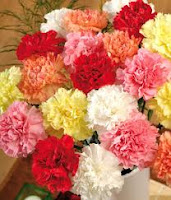September marks the beginning of the butternut squash season, as well as the start of the pumpkin and other winter squashes hitting the shelves of your local market or supermarket. The butternut squash is one of the Cucurbitaceae family of plants and as such it is related to the pumpkin, cucumber, courgette, melon and watermelon, to name but a few of its many relatives.
The butternut squash is one of my favourites with its orangey flesh promising lots of beta-carotene and lycopene, so I know it’s healthy and tastes good. It is rich in vitamins C and A; it also has vitamins E and K as well as a good number of the B-complex vitamins. It is also a source of Omega-3 fatty acid and Omega-6. As for minerals it is rich in magnesium, manganese and potassium and also contains calcium, iron, phosphorous and zinc with traces of selenium and copper. Tryptophan is one of the 18 amino acids in a butternut squash’s seeds and this helps produce GABA (Gamma-aminobutyric acid) needed for neurotransmitters in the brain to function well. The polysaccharides in this squash have anti-inflammatory properties and are insulin-regulating, making this a good food for diabetics. The squash is also high in dietary fibre, adding bulk to our diets, so preventing constipation and thus helping to prevent piles and colon cancer. This also helps in a weight-reducing diet.
 It is heart-healthy as it has no cholesterol and vitamin A including that converted by the body from the polyphenolic flavonoids lutein and carotene, which have potent antioxidant actions. There is more vitamin A in the butternut squash than in the pumpkin, and this helps to prevent lung and oral cavity cancers and helps our vision.
It is heart-healthy as it has no cholesterol and vitamin A including that converted by the body from the polyphenolic flavonoids lutein and carotene, which have potent antioxidant actions. There is more vitamin A in the butternut squash than in the pumpkin, and this helps to prevent lung and oral cavity cancers and helps our vision. The seeds are edible, like the pumpkin seeds and can be eaten raw and roasted, so don’t throw them away when you prepare a butternut squash for cooking.
In fact the first butternut squashes were cultivated for their seeds, and it is believed that the early squash was much less fleshy than the varieties we have today. It is thought that the butternut squash originated in Central America , in Mexico Guatemala
 You can cook this versatile squash in many ways, baked, boiled, steamed, casseroled, made into thin game chips (crisps); puree it for use in soups or as a spicy dip, with celery and carrot sticks to scoop it up with – there are lots of things you can do with one.
You can cook this versatile squash in many ways, baked, boiled, steamed, casseroled, made into thin game chips (crisps); puree it for use in soups or as a spicy dip, with celery and carrot sticks to scoop it up with – there are lots of things you can do with one. Below is a recipe for baked butternut squash, to use with other vegetables and meats as a side dish. Check out the other recipes we have such as butternut squash with pecans, or topped with macadamia nuts, or substitute it for the pumpkin in the pumpkin and stevia recipe. Bon appetite!
Ingredients
1 large or 2 small butternut squash
olive oil
2 tbsps butter
few sprigs of thyme stripped of leaves
few whole sprigs of thyme
1 tbsp cumin seeds
1 inch piece of cinnamon
¼ tsp grated nutmeg
Method
Preheat the oven to 180ºC/350ºF/gas mark 4.
Cut the squash in half lengthways and remove the seeds then cut each piece into quarters.
Grease a baking tray and put the quarters onto it cut side up.
Grind the cinnamon stick and sprinkle over the pieces along with the thyme, nutmeg, cumin seeds salt and freshly ground pepper.
Drizzle well with olive oil and dot with butter.
Bake in the oven for 40 – 50 mins or until the squash is tender and some parts are golden brown.
Scoop the flesh out of the rind if you wish (it’s edible too) and puree the flesh, or leaves as they are and serve.
This has Taste and is a Treat.






















